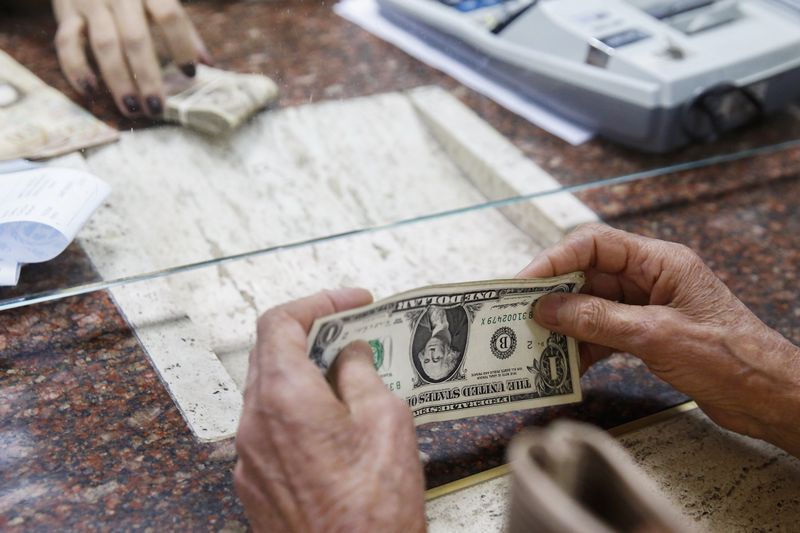Investing.com – The U.S. dollar drifted marginally lower Monday, consolidating after recent swings as the focus turned squarely to upcoming U.S. inflation data for more cues on interest rates.
At 04:00 ET (09:00 GMT), the Dollar Index, which tracks the greenback against a basket of six other currencies, traded just 0.1% lower to 105.090, after a weekly gain last week after two successive weeks of decline.
Dollar awaits key inflation data
The dollar saw wild swings last week as mixed U.S. economic readings sparked questions over just when the central bank will begin cutting interest rates this year.
However, this volatility is likely to retreat at the start of this new week as traders await the release of the latest U.S. inflation data, which will likely dictate near-term sentiment regarding potential rate cuts.
Analysts expect Wednesday’s crucial report to show underlying inflation rising 3.6% on a year-over-year basis, which would be the smallest increase in over three years.
But a hotter-than-expected inflation reading would likely price out rate cuts for the rest of the year, likely boosting the greenback.
“After the dovish FOMC meeting and the soft April NFP sucked the momentum from the dollar’s upside, the question is whether price data can actively contribute to the dollar’s downside,” analysts at ING said, in a note.
Investors will get some fresh insights into the health of the U.S. consumer this week with April data on Wednesday, plus earnings results from major retailers Walmart (NYSE:) and Home Depot (NYSE:).
remove ads
.
Sterling benefits from strong growth data
In Europe, gained 0.1% to 1.2531, retaining some strength after data showed last week that Britain’s economy grew by the most in nearly three years in the first quarter of 2024.
“Sterling continues to witness a stop-start sell-off, where Friday’s release of a stronger-than-expected first quarter GDP figure for 2024 managed to give sterling some support,” ING added.
“We doubt this better-than-expected reading has too much impact on Bank of England thinking – beyond perhaps giving it some room for patience on policy. And we retain our downside bias for sterling over the coming quarters.”
traded 0.1% higher to 1.0784, although this firmer tone could be short-lived with the European Central Bank all but promising a rate cut on June 6.
Eurozone inflation remains on track to fall back to 2% next year, so policymakers will likely start cutting interest rates from a record high in June, the account of their April meeting showed on Friday.
Markets now see up to three rate cuts this year, or two beyond June, most likely in September and December, when the ECB also publishes new economic projections.
Yuan falls to two-year low
In Asia, rose 0.1% to 7.2339, hitting a two-week high after data released over the weekend offered mixed cues on Chinese inflation.
inflation rose more than expected in April, as persistent stimulus measures from Beijing helped buoy demand. But inflation shrank for a 19th consecutive month, as Chinese business activity remained laggard.
remove ads
.
Traders were also wary of China after reports last week said the Biden administration was preparing more trade tariffs against the country, especially on China’s electric vehicle sector. The move could reignite a trade war between the world’s largest economies.
rose 0.1% to 155.87, hovering just below the 156 level.
The focus remained on any more potential government intervention to support the currency, following at least two instances of intervention earlier in May. The government was seen stepping in to bring down the USD/JPY pair from 34-year highs above 160.

